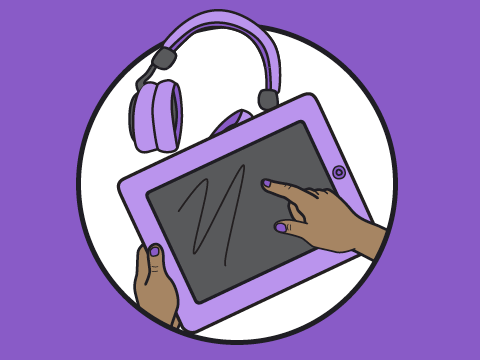Create an accessible learning environment | Te waihanga wāhi ako tomopai
Set up your classroom and learning areas to be welcoming spaces where ākonga can thrive. Reflect on your teaching methods, assessments, and practical resources to make learning accessible.
On this page:
On this page:
Current page section: Create an accessible learning environment | Te waihanga wāhi ako tomopai
Go to top of current page: Create an accessible learning environment | Te waihanga wāhi ako tomopai
Go to top of current page: Create an accessible learning environment | Te waihanga wāhi ako tomopai
Go to top of current page: Create an accessible learning environment | Te waihanga wāhi ako tomopai
Why this matters | Te take
Why this matters | Te take
By making learning environments more accessible for ākonga using a Universal Design for Learning (UDL) approach, we tailor the learning to meet the needs of ākonga. This reduces ākonga anxiety, improves engagement and motivation, and gives them the best possible start in their new setting.

Source: Tātai Aho Rau Core Education
Moving around the school | Ngā wāhi i te kura
Moving around the school | Ngā wāhi i te kura
"Mā te huruhuru te manu ka rere"
Feathers enable a bird to fly.
Consider how ākonga will gain access to all areas within the school grounds. This includes:
- canteens and tuck shops
- library and hall areas
- suitable playground equipment
- areas to sit or play during break times
- wet day areas
- lockdown or emergency evacuation areas
- toilets
- pick-up and drop-off areas
- bus stops.
Create visual supports | Rauemi ataata
Create visual supports | Rauemi ataata
Visual timetables are a proven way to provide structure and stability for new ākonga. It may take several weeks or months for ākonga to learn to use their visual timetable. Continue to reinforce these visual routines and model the use of them daily. For more examples see the Autism and Learning Guide.
Source: Ministry of Education | Te Tāhuhu o te Mātauranga
Closed Captions
Create community within your class | Te whai hapori i tō akomanga
Create community within your class | Te whai hapori i tō akomanga
When welcoming a new ākonga into your class and school, you could:
- send an email or a letter from the class
- share food and mihi on their first day
- create a welcome booklet
- welcome a deaf or hard of hearing student using NZSL and learn how to use sign language (Deaf and hard of hearing guide)
- invite a student to be a buddy to the new student to provide social and in-class support.
Equip with assistive technology | Hangarau taituarā
Equip with assistive technology | Hangarau taituarā
- Ensure that assistive technology supports are applied or set up before ākonga arrives.
- Check whether existing software or devices need to be updated (example: apps and digital hardware).
- Save important details for accessing devices and software in a common, accessible place for all staff.
Useful resources | He rauemi
Useful resources | He rauemi

Who assistive technology is for
The Ministry of Education has regional coordinators who can assist with information and requests for assistive technology.

Technology tools for learning
This guide may provide guidance and support with assistive technologies.
Next steps
More suggestions for implementing the strategy “Prepare your environment | Te whakarite wāhi ako”:
-
Current page Create an accessible learning environment | Te waihanga wāhi ako tomopai
-
Inclusive practice: Early years to primary | Te whare kōhungahunga ki te kura
-
Inclusive practice: Primary to secondary | Kura tuatahi ki te kura tuarua
Return to the guide “Te Ara Ako – Learning pathways in times of change”
How to use this site
Guide to Index of the guide: Te Ara Ako – Learning pathways in times of change
Understand:
Strategies for action:
-
Nurture whānau partnerships | WhanaungatangaShow suggestions for Nurture whānau partnerships | Whanaungatanga
-
Develop ākonga partnerships | Te mahi tahi me ngā ākongaShow suggestions for Develop ākonga partnerships | Te mahi tahi me ngā ākonga
-
Prepare your environment | Te whakarite wāhi akoShow suggestions for Prepare your environment | Te whakarite wāhi ako
- Create an accessible learning environment | Te waihanga wāhi ako tomopai
- Inclusive practice: Early years to primary | Te whare kōhungahunga ki te kura
- Inclusive practice: Primary to secondary | Kura tuatahi ki te kura tuarua
-
Working as a team | He whānau kotahi tātouShow suggestions for Working as a team | He whānau kotahi tātou

